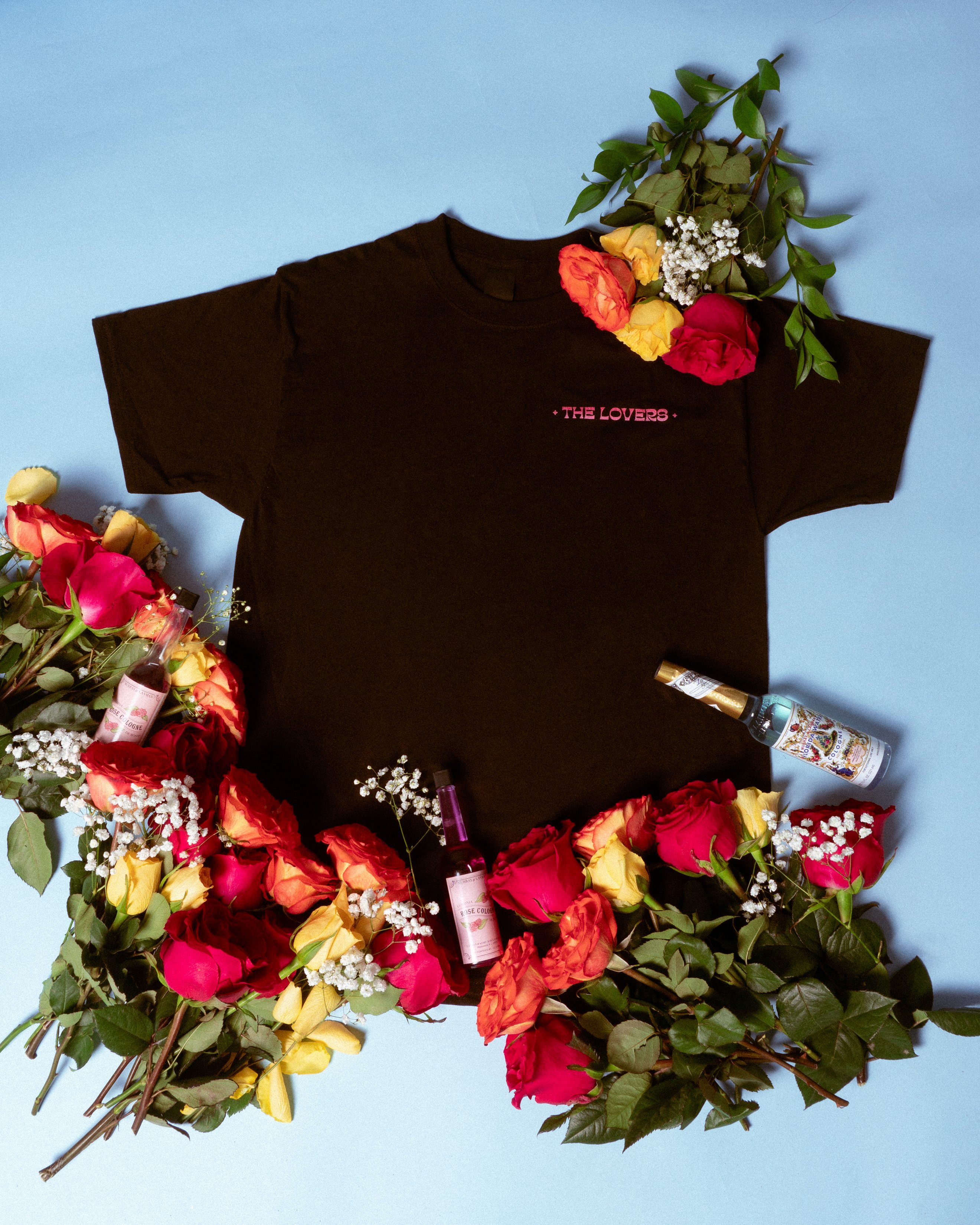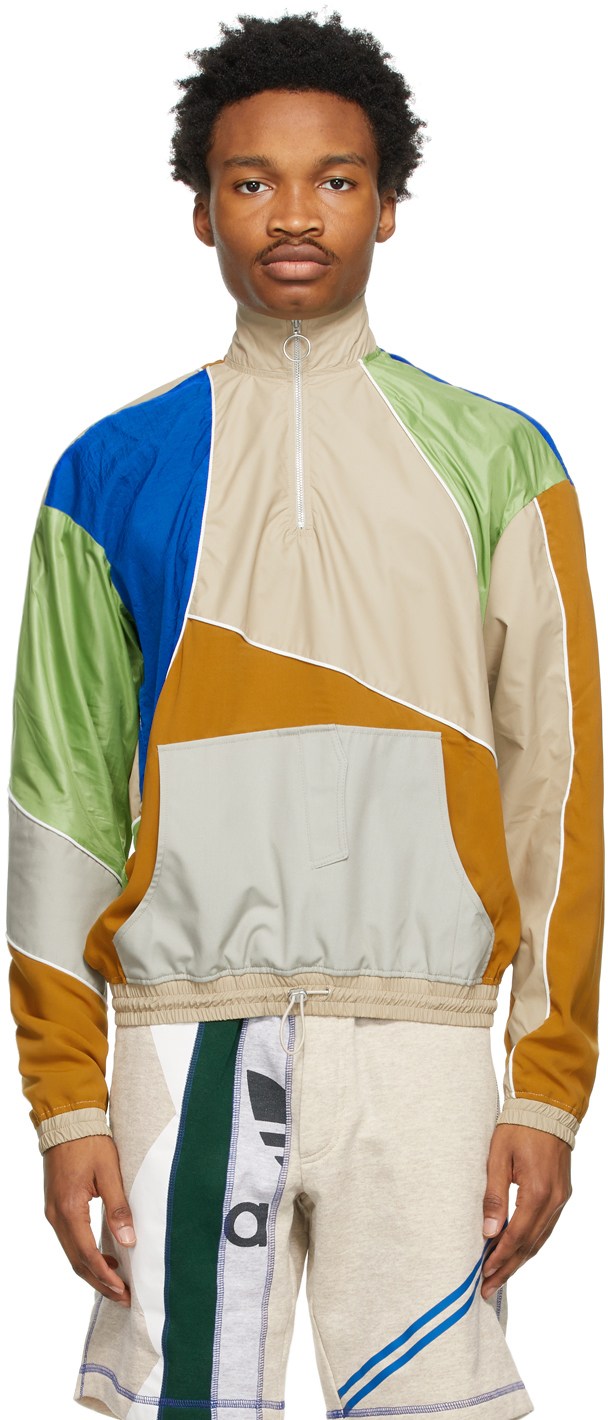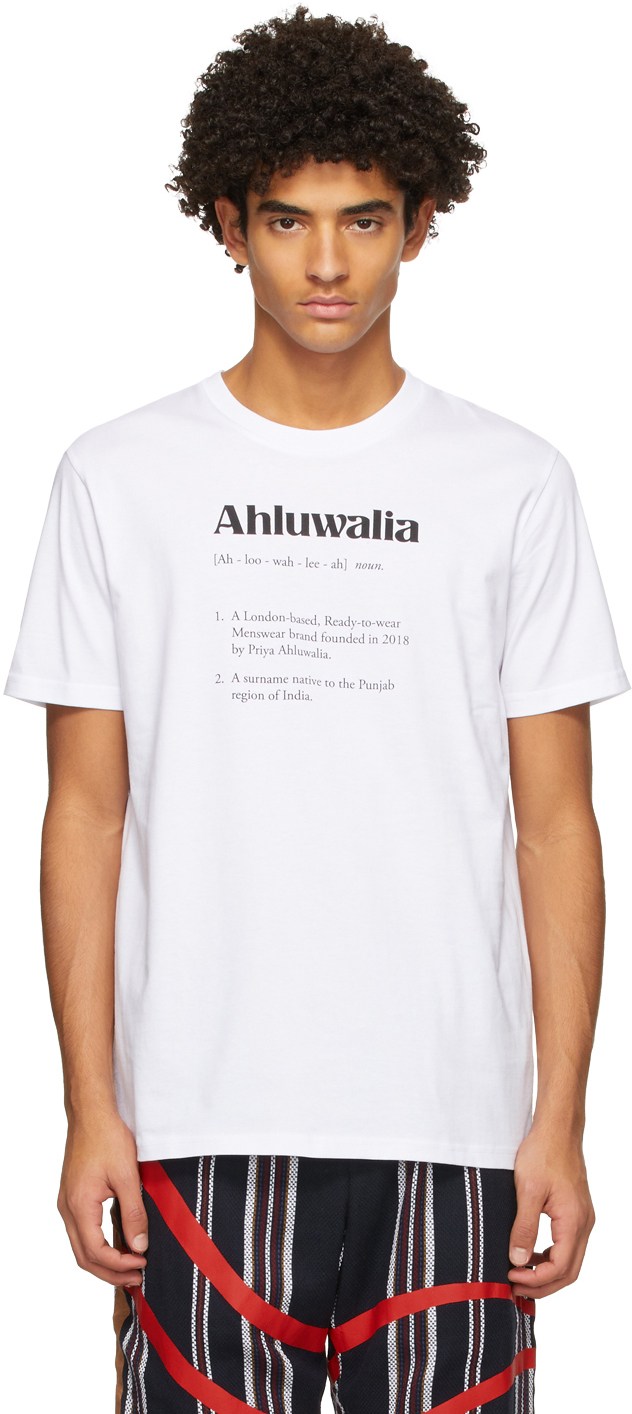Black Women Have Been Erased From Streetwear–These Women Are Changing That

Today, the influence of streetwear culture is inescapable. As a witness to the evolving topography of the fashion industry, it's difficult to deny the shift in favoritism towards designers who can sell $500 logo T-shirts just as well as an immaculately tailored suit. A few years ago, the idea of a self-taught designer with little to no formal training helming a storied fashion house would sound almost implausible, but as the recent installments of Virgil Abloh at Louis Vuitton and Matthew Williams at Givenchy shows, streetwear is king.
Hypebeast culture has done much to significantly accelerate its popularity. Last year, Supreme was valued at $1 billion, making it the first streetwear brand to do so—showing the world that streetwear is a bona-fide force to be reckoned with, but the faces pictured wearing those four-figure sweatsuits and exclusive sneaker drops don't reflect the history of the culture I grew up knowing.
It's easy to get swept up in the allure of high-priced bomber jackets and designer bucket hats, but at its origins, streetwear was a mode of dress born out of necessity and generational defiance in Black and Brown communities. Looking at the mass of visual campaigns from streetwear adjacent publications and brands, I run into the same trope of the commercially viable female sneakerhead: often racially ambiguous, with loose curls and the modelesque physique to match. It's rare to see a representation of the Black women I knew who were first in line to buy the latest pair of Nikes. You'd almost forget that Black women like Mary J Blige, Misa Hylton, and SWV were some of the trailblazers of the culture who made wearing oversize fits and chunky gold jewelry cool. Frankly, there would be no streetwear today as we know it without the trendsetting influence of these women and others like them.
More and more as I make my way through the industry, the connection between its origins and the marketed appeal of today seems to slowly erode. The ubiquitous presence of its Black founding mothers doesn't feel as celebrated or acknowledged as their male counterparts. Part of the process of emphasizing the contributions of Black women into this narrative includes an honest discussion about what streetwear is today and where it's going. In an effort to acknowledge and place Black women back into the streetwear narrative, I wanted to speak to some of the tastemakers working to change the industry from the ground up. Ahead you'll hear from three Black women on the state of streetwear, their fashion icons, and what they're doing to shift the conversation.

Sandrine Charles wears several hats these days. A veteran of the PR world, Charles has counted some of the biggest names in streetwear including Kith, Noah, Aimé Leon Dore, and October's Very Own as clients. After launching her own public relations agency in 2015, she now devotes her time to running the Black in Fashion Council, an organization she co-founded with Lindsay Peoples, that aims to build connections and resources for Black fashion professionals.
What are some of your earliest memories of streetwear?
My first introduction was in the late '90s/early 2000s, sneaking to watch BET. Knowing how I grew up as a first-generation Caribbean American, I wasn't even allowed to watch BET or MTV, so everything I learned about streetwear wasn't necessarily through all of the iconic stylists from the past, but from watching rap music videos. I was noticing all the brands like the FUBUs and the Baby Phats of the world, going, "Okay, that's what I need to be wearing. That's what I need to be buying." My school was very preppy in a suburban neighborhood, so it was different to incorporate those types of styles at the time.
You worked closely with a lot of streetwear brands in the PR industry. How did that change your style?
After coming to New York City for college, my style started evolving through my experience working at various PR agencies and internships. I was also influenced by women like Misa Hylton, who is now an advisor for the Black in Fashion Council and just someone that I truly look up to and admire, and Vashtie, who I frequently saw a lot in SoHo since I lived in Tribeca at the time. Essentially, my evolution towards streetwear was through firsthand accounts because I didn't have the luxury of being exposed to that culture growing up.
Black women have a hand in setting so many trends in fashion. Did you see that type of representation working in PR?
When I was working at PR agencies, I definitely was the Black girl or the Black person. Once I got to a specific agency later on in my career, I was lucky enough to have a diverse team, and the brands they gave me were what they called the "streetwear" brands of the agency. From then, as I started owning different clients, like working with Ronnie to open Kith and launch Kith Treats, that's when people started to know me. But looking back, maybe not enough opportunities were given to us to be apart of streetwear in that way. However, I have now noticed an increased presence of Black publicists in the field. Years ago, I was always in L.A. and New York working on all of these big collaborations which also exposed me to so many different people from other areas in the fashion industry like Bephie from Union, who I looked up to, and so many more people you wouldn't necessarily know until you get familiar with the industry. After seeing this I'm like, "Okay, there is another me here" or "There is another me there."
Speaking of women like Kimora Lee Simmons with Baby Phat and Angela and Vanessa Simmons with Pastry, why do you think we don't see that kind of big brand ownership from Black women within the streetwear space?
That's a great question, and I really don't know. Before recent events, I don't think that people were investing in Black women or Black people, in general, so when we ask questions like, "Where were the investors? Where were these people to start a new brand?" I think a lot of these people were just trying to stay above water or work at companies where they knew that if they worked for a certain name they could elevate in the industry. That was really all that was said as "possible" at the time. I'm not saying that people couldn't go out on their own, but if you watch the trajectory of previous urban wear or streetwear brands, you may be a little bit more hesitant. There are so many amazing people who have worked for the FUBUs, Karl Kanis and the Baby Phats of the world who are in different spaces of the fashion industry today and still have a wealth of knowledge or enough ideas to start their own brand. And maybe they are or maybe they aren't okay with it. Starting a brand is expensive at a specific level, and at that point in time, it was different. I mean, now we have so many Black-owned brands—even over the course of a decade—who are turning pieces and collections every single season, but was it possible 15, 20 years ago? Not really. I'm not sure about the specifics, like what the cost of goods was, where they were sourcing their materials, how much it costs if they were being supported, or whether they were working two jobs to get there, or if there was like a silent investor, etc. However, we do know the ones that were around growing up impacted and inspired a lot of the non-Black-owned streetwear brands today.
What changes do you think are necessary from the industry in order to change this?
I think it has to just be a conscious decision. You have to want to help Black women. You want to also elevate them in spaces where their talents and their resources will be recognized and utilized. And not just because we're in a space in time where people feel like they have to do it. It's so easy to find new talent now. I have met so many Black women working behind the scenes in this industry I wouldn't have otherwise known. Last year I had a call with a very well-known streetwear brand, and I was so shocked to know that the girl I was talking to on the other side of the phone, who was their publicist, was a Black woman. I said to her, "You're Black? Oh my god!" It was nice to see. So it's very interesting that as we continue to grow. People are getting these positions and their footing in different spaces.
Are there any Black women in streetwear that you currently look up to, or women-owned brands you have your eye on right now?
Well, Beth Gibbs or Bephie who owns Bephies Beauty Supply as well as Estelle Babenzien who is co-owner of Noah. Then you have so many new designers who are coming out through the Council that I'm getting to know like Sade who founded EDAS. I also like Glazed NYC too. I think there are so many veterans and newcomers that we'll see one hundred percent more growth. By the time I retire, I just hope that I can pass on the baton to Black girls either working for me or some of my mentees or just other Black women, in general. I hope that as an industry we continue to champion Black women in different spaces of fashion. And for me, whether it be streetwear or elevated streetwear or footwear, I think there are more spaces and chances that we should definitely continue to work in that wheelhouse where we are not in competition with each other. There doesn't need to be one at the table.
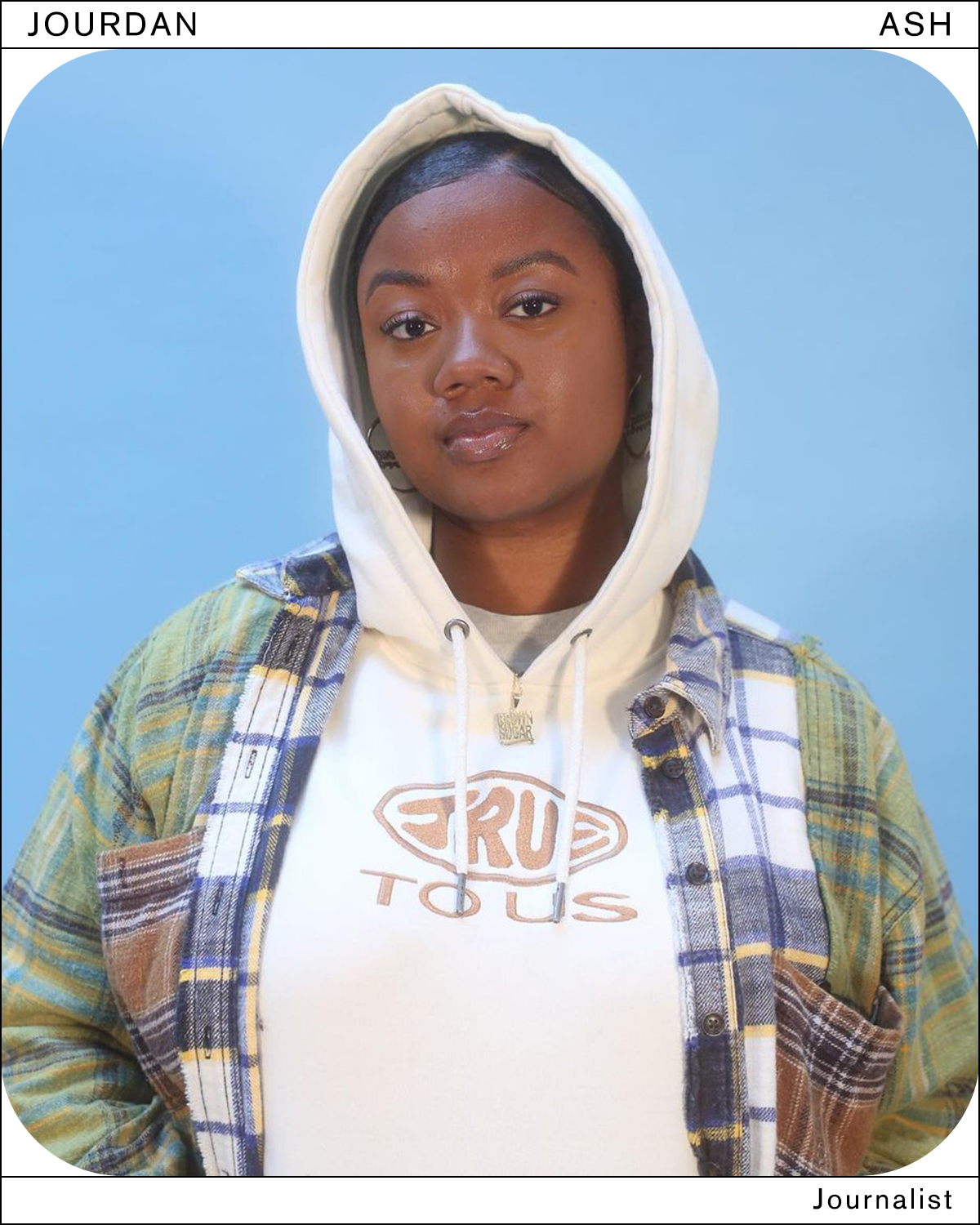
Jourdan Ash is a journalist and content producer with a formidable knowledge of the ins and out of streetwear culture. Born from an edit test, her digital platform, True to Us, is focused on centering and normalizing Black women as the foundations of streetwear and sneaker culture. The brand also recently launched a collection of sweatsuits and T-shirts. Before becoming a music journalist, Ash worked for the likes of Complex, Married to the Mob and Vashtie Kola. Read ahead to hear her thoughts on what it's like to be a Black woman in the business.
What are some of your earliest memories of streetwear?
I've always been a solid streetwear/sneaker baby because my name is Jourdan. My mom had me when she was in her twenties, so I was always "Jourdan in Jordans," and that was the look. My mom was also my style icon. She played the tomboy and the relaxed, baggy '90s style very well, so even pieces that she had in her twenties, those are pieces that are now mine. When I got older, I was a Karmaloop girl. I was also into Rocawear and Baby Phat, but when it came down to me buying my own stuff, it was Karmaloop for me all the way. There's a store in SoHo called Michael K, and I was in there every week.
It’s really weird because I ended up interning for every streetwear brand or store that I was in love with growing up. Married to the Mob was one of my favorites as a teenager, and I interned for them right after college. On the flip side, I wore Stüssy all throughout high school, but I didn't really get into Supreme until college. It was all about finding what I liked and knowing how to make it my own because I went to a high school where we had to wear a uniform almost every day. The only time we had to show off was on our dress-down days, and when those days came around, I made sure that I had on my fresh Married to the Mob with some H&M jeans and Dunks with the shoelace headband.
What was the moment that lead to the creation of True to Us?
A friend who works in journalism sent me a DM about a publication doing another podcast of the same show they already have that only features men. Right then, it was just like one of those moments where I realized I could be the change that I want to see, or I could complain about it. There are a lot of times where it's like, "I am being the change that I want to see, and I'm kind of tired," but it's also like, "What's stopping me?" In journalism, they sort of teach you that you have to have your name associated with a publication to succeed, but as the pandemic showed us, that’s not true. So many people I know have used their voices during the pandemic. Inspired by that, I did what I knew how to do best: I created my community. It was more so just bringing all of my people together because these were conversations I was already having separately with my homegirls on Twitter or in small Nike meetings. I was just bringing them all together in one place with True to Us.
What were some of those conversations brought up?
I think it's more so that the story that is being told or at least marketed within the streetwear and sneaker space is that Black women look one particular way. That's the biggest thing that I hear on and on, time and time again. I can ask the same question from different Black women, and they'll always say the same thing: "There's always this one girl with big curly hair who you're not sure if she's Black. Like she could be Black, but it's ambiguous. It feels like a token. She doesn't represent me and what I look like, or what my neighbor looks like." The issue is that she doesn't represent most Black women. It's like we're in this marketing space where brands think they can have one Black girl in their ads and that's completely cool. That's not enough. It’s the same rhetoric for everything—it's not enough that only one store did a women's exclusive drop for the recently released silver Jordan 1s. It's like women have to fight constantly to be seen and heard within the streetwear and sneaker industry. And that's why True to Us highlights different Black content creators in these spaces. We talk to different Black women in different areas of these industries.
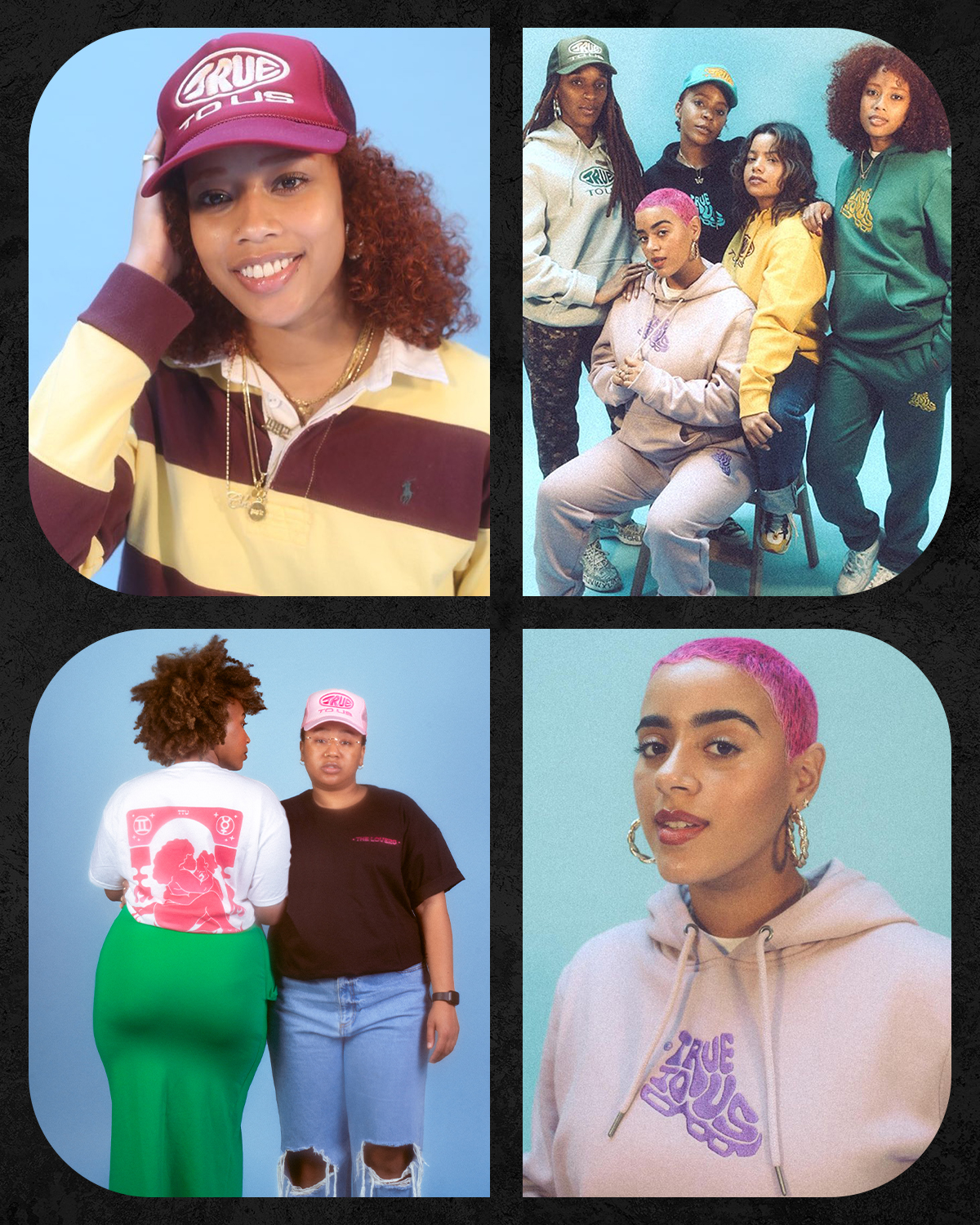
You've been able to work at some really popular streetwear companies. Did you see many Black women in these spaces?
I actually didn't see that at all. In most places I interned, I was the only Black woman. At one of my first internships, I was one of two Black women, and I remember just working there fresh out of college on my days off from my full-time job. I was interning for a designer and DJ, and another streetwear brand at the same time, and none of them paid me. At first, it was like, "Okay, cool, I don't mind not getting paid if I'm getting some type of learning from it." And so I remember just sitting at my internship, you know, just waiting for something–and this is when that company was in its heyday–but I didn't learn anything. And then I just realized, you know, I'm spending my days off here to learn something about streetwear, to learn something about being a boss and I'm not really doing anything. So I left.
After that, I started interning for a well-known DJ and creative within the streetwear indsutry working on my lunch breaks for her. It was the same thing, though. I was just waiting for this moment where it's like we have this heart-to-heart and you tell me what it's like to be a Black woman in streetwear, to be one of the first Black women to have her own Jordan. Like, I was just waiting. I often found myself waiting on those moments that I try to give people through True to Us now.
What did you learn about that experience?
I feel like I wasted a lot of time. I took the journalism route into streetwear because nobody ever told me how to get into that business. Nobody ever came to our high school during job fairs and said, "Hey, this is how you get into the industry. Even if you don't want to design your own stuff, this is how you do it. Even if you want to work on the marketing end, this is how you do it," and no one was ever there to tell us that. So for me, I was looking at Complex, I was looking at The Fader and I'm like, "Okay, well, this is my end." I got to intern with my streetwear idol and at cool brands I loved growing up, but I didn't learn anything. So I stepped away from it.
How do you view the industry now?
I didn't really see too many Black women, although I think right now, I do see a lot of us. Some of these women come to me, and I still feel like I'm that little kid interning. I'm just still learning and soaking up so much. I just wish I had this six or seven years ago because I think I would have had a different path, or I would have come to this journey sooner.
Which changes do you think need to be made in order for the streetwear and sneaker industry to increase diversity?
I need everyone to make right on all those goals and deeds that they put in place in June. When there was this social reckoning, and everybody was scrambling for how to support the Black community, right now especially during Black History Month, I need to see those receipts. That means you're actually doing the work. That means you're not just picking a Melody Ehsani for a collaboration, but digging deep into the girl who was always like Melody, who makes her own iterations of sweatpants or sketches sneakers on the train—it's tapping into that girl and tapping into that talent. Can we have another Aleali Mai sneaker? Absolutely. But can we have a sneaker made by the girl who looks up to Aleali Mai who will not design the same exact sneaker as her? Absolutely; there's space for both. It's just a matter of brands actually doing the work. That means, you know, not just picking models who are your friends, it means we're digging deep and we're not simply choosing the same five girls to appear in campaigns or events. Because you know, after a while, it's like, you look at marketing, and realize it's just the same girl. Or it's the same-looking girl but with a different name.
What's something streetwear brands can learn from True to Us?
I don't think that these big brands are talking to people. They're not talking to the consumer. They're not talking to, you know, the girl who changes from her Hush Puppies into her Nike's on her way to school because she has to look fly in her uniform. They're not talking to these people who have the stories. I learned so much just by talking to people and sharing.

Banna Girmay is the woman behind the streetwear label Mama Banna, where she integrates elements of her Eritrean culture into its creative direction and designs. Her path to creating her own label was far from conventional. She worked as a lawyer for seven years before dabbling into her first love, fashion. Hear how Girmay built her own label and why she thinks more Black women deserve credit in the industry.
What compelled you to forge into fashion and create Mama Banna?
I first started taking sewing classes, and then little by little, the idea grew. It basically stemmed from me being a lover of fashion. I always felt that fashion was a way for me to express my beliefs and my cultural heritage, and looking at other brands out there, I just felt like my Eritrean background was notably missing from my fashion choices. There was really nowhere for me to go to kind of reflect that part of myself. Simultaneously, I noticed a lot of Eritrean and Ethiopian artists and creatives popping up, so I felt like there was probably a need for this type of fashion brand outside of myself, for the larger community.
Was streetwear a presence in your Eritrean upbringing or within the Eritrean community?
Back home, whenever we're called to wear a cultural dress, it's always for weddings or formal events, and we wear dresses. That's really the only way to express or retrain culture through fashion. Streetwear was not a thing at all. So yeah, that's also part of it. The whole idea behind Mama Banna was that I wanted to be able to wear stuff that reflected my cultural heritage, and not only during weddings.
I noticed that you included Brooklyn, Amara, and L.A. in your Instagram bio. Do you spend time in all of these places?
I included all three cities—Asmara, Brooklyn, and L.A.—in the brand's Instagram bio on purpose. I noticed that a lot of Black people have been going to the continent recently, and I would really love for us to have a tri-coastal lifestyle where we have another—or multiple coasts—that we can consider major creative hubs in Africa. I think that will be the future, the wave of more people going back to the continent will be so much stronger.
Obviously, with the pandemic, there are so many more people moving back home and as those people start integrating, like having their full lives out there more and more, I think there will be more reason to go visit. That was also part of the idea with Mama Banna. I'm from L.A. and Eritrea is on the East Coast of Africa right next to the Red Sea, so I see a lot of parallels between the coastal cultures. I didn't feel like African culture was really associated with a coastal culture that often even though there's this whole entire continent with multiple coasts. So that's something I hope helps to bridge the gap. I don't see why that can't also be part of the lifestyle.
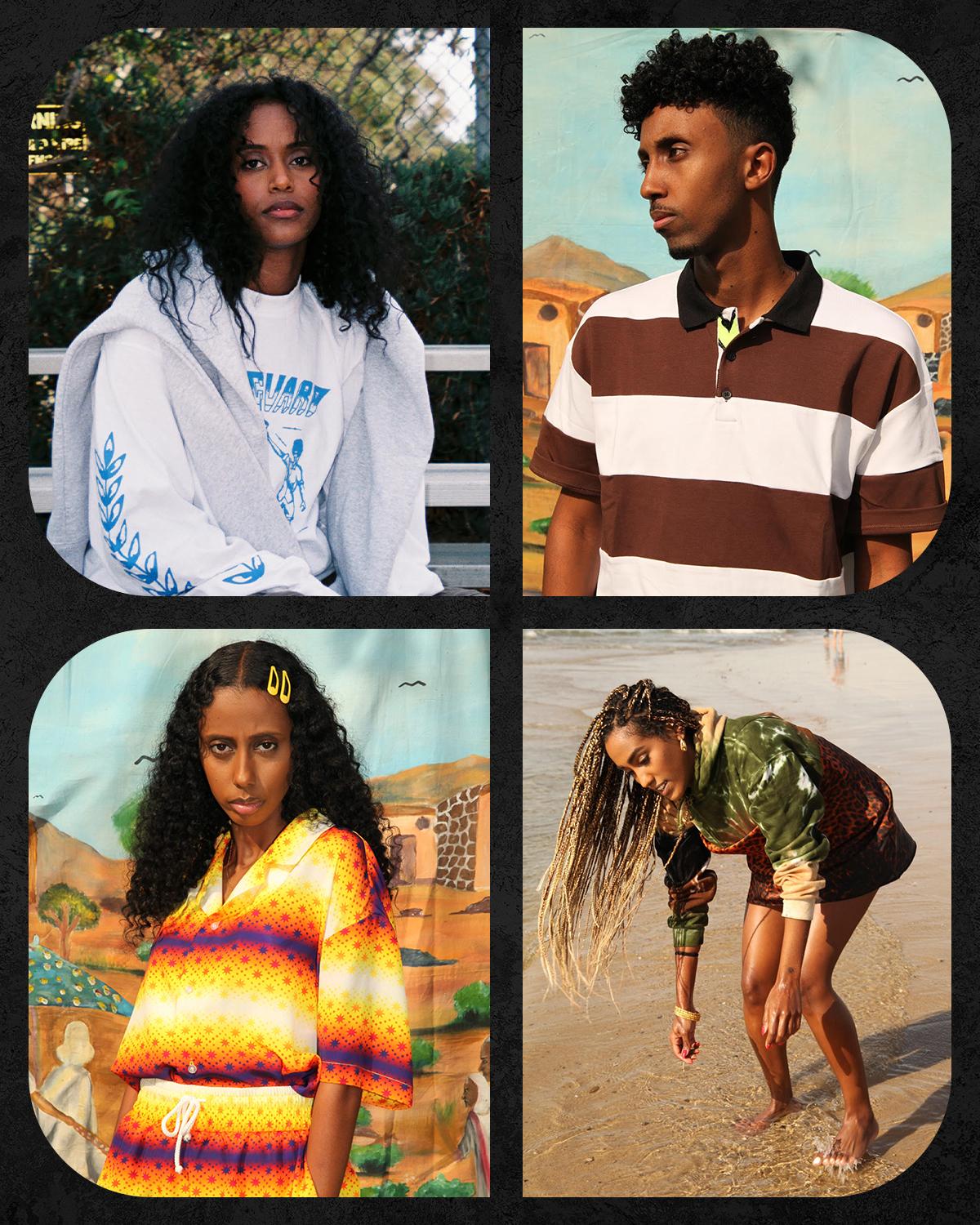
Do any other streetwear brands inspire you?
I'm really inspired by Stüssy. I love how they have stuck to what they knew best, and everything they do is just beautiful. There's also this pride in wearing just a plain shirt that says Stüssy on it, in a different way than I think wearing a Supreme shirt does. You know when someone is wearing a Stussy shirt, it really feels like they are representing a certain belief system or values—like there's something with integrity behind it. And I look up to that and their ability to maintain that over so many years. I hope that one day, or even today too, that if someone were to be wearing Mama Banna or just mention Mama Banna that people would remember the values associated with that. I'd consider that aspect really important to me for my brand aside from the aesthetics.
Everything from Mama Bana is self-funded and everything made is reinvested back into the business. Anything that's sustainable or lives for a long time I believe is built brick by brick, person by person, so even when I get just one new order or ten new orders from people I've never met and who really resonates with the brand, it really makes me feel like I'm building it right. The reaction has also been really beautiful from the community; I get messages all the time like, "Keep going," "Thank you so much for doing this for us," and "I've never seen anything like this before." I just think putting attention back into your own culture is a powerful thing to do because all of our stuff is cool. It just takes someone to really dig and present it in a certain way.
What changes would you like to see within the streetwear industry?
Definitely in streetwear, particularly, hype beast culture comes with the territory, but this fast-fashion approach to streetwear makes a lot of the pieces feel kind of empty. It just feels like all aesthetics rather than what streetwear was originally meant to do, to reflect a culture or a group of people and be something that everyone believes in. I would like to see people, not buy into that kind of emptiness of some of the drops that I'm seeing, and hope for more out of the brands rather than just buy a T-shirt because it's really cool and that's it. I want you to tell me a story or use the clothing in a subversive way, to express something. Everyone is kind of looking to make a statement with what they wear and use that real estate to really tell a story or project their own personal beliefs. And I just want that more from brands.
Luxury fashion using streetwear is also like this new territory because to me, the nature of streetwear is that it is accessible to people. It seems a bit contradictory to charge $1000 for a T-shirt that probably costs you like $5 to produce. I understand the concept of supply and demand, but I'm not quite sure how that will play out in the industry.
One of the things that comes up a lot for me is that I don't see a lot of Black women at the forefront of big streetwear labels, getting the same type of recognition as say a Supreme. Is that something you feel in the business?
It feels like this happens a lot. It's like when Black people do it, it's called "urban," but if white people do it, it's called "streetwear." Or like with Justin Bieber, it was called "pop music," but when a Black artist does it, it's called "R&B." It's unfortunate that I don't really see many Black women in the streetwear space even though it was born from Black women.
Shop More Items From Black-Owned Brands
Indya Brown is a fashion editor, stylist, and writer living in Los Angeles. After graduating in 2016, she joined The Cut as a fashion assistant, eventually working her way up to fashion editor. While New York has been her home for over 10 years, she moved to Los Angeles in the midst of the pandemic in 2020 for a new chapter where she started working at Who What Wear, focusing on emerging designers, rising trends on and off the internet, interior design, and BIPOC creatives and brands. Aside from her work at Who What Wear, Brown is also a freelance stylist and writer, working on national print and video commercial campaigns for Sephora, The Independent, and Cadillac. Her bylines also include Harper's Bazaar, Vox, and The New York Times.
-
 I Just Introduced My 56-Year-Old Mom to Revolve—37 Cyber Monday Deals She and I Agree On
I Just Introduced My 56-Year-Old Mom to Revolve—37 Cyber Monday Deals She and I Agree OnExpensive-looking winter finds ahead.
-
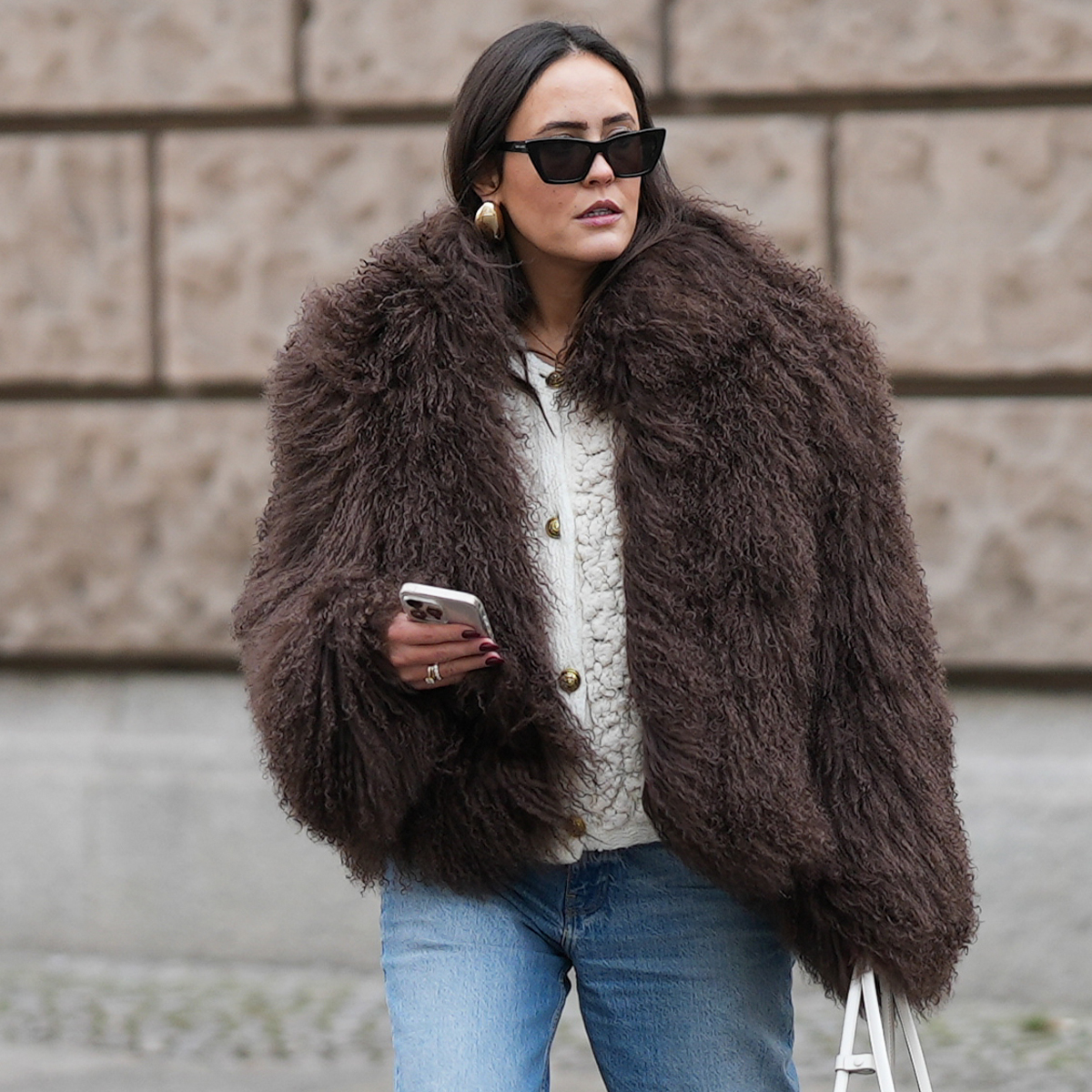 I Just Saved $767 on an Elevated Winter Wardrobe (Thank You, Amazon)
I Just Saved $767 on an Elevated Winter Wardrobe (Thank You, Amazon)Can't get over these Cyber Monday deals.
-
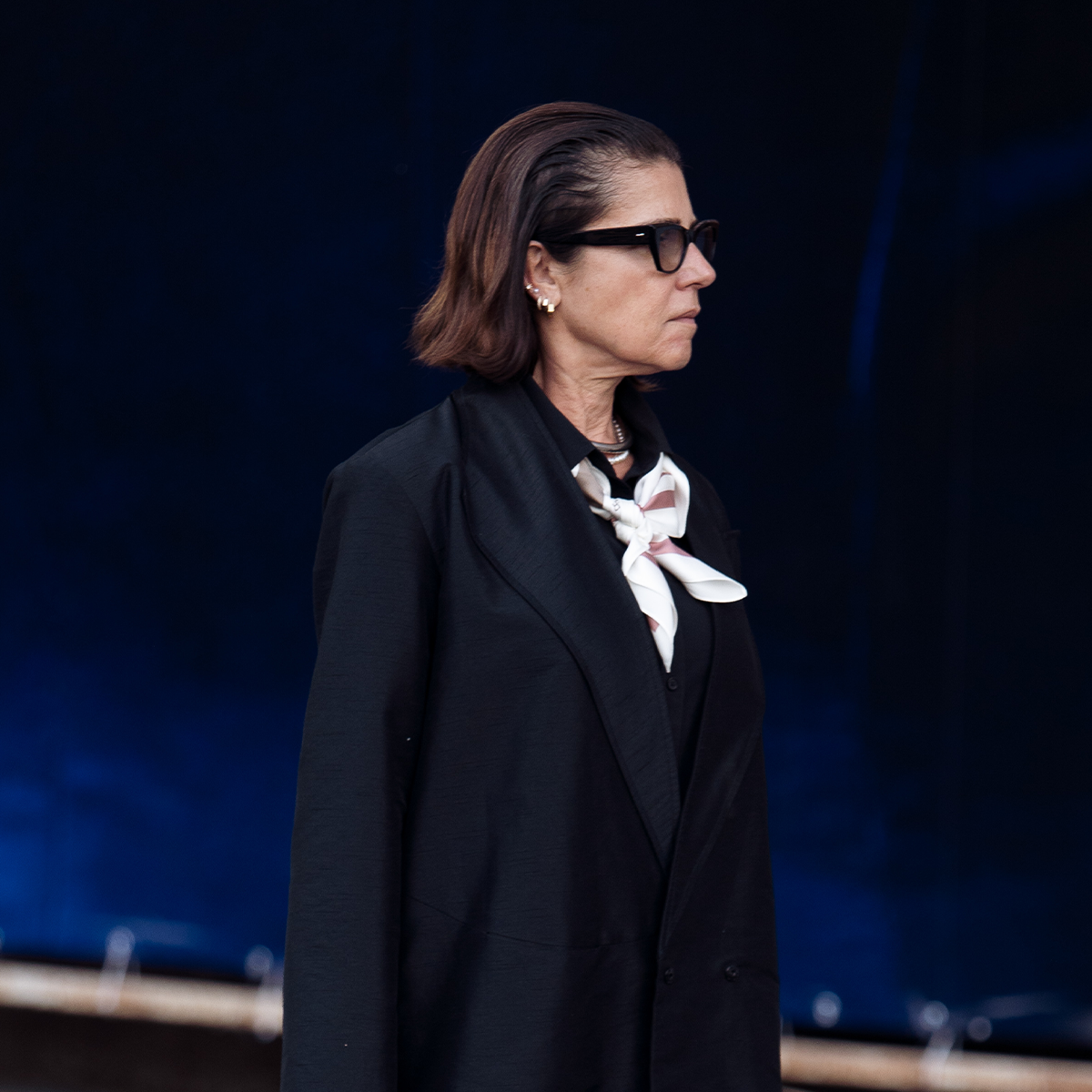 Sure, Ballet Flats Are Fine, But Women Over 50 Love This Controversial Flat-Shoe Trend Instead
Sure, Ballet Flats Are Fine, But Women Over 50 Love This Controversial Flat-Shoe Trend InsteadBuh-bye, heels.
-
 Every Time Bella Hadid Wears This Sneaker Trend, It Looks So Rich—I Found 13 Pairs Starting At $37
Every Time Bella Hadid Wears This Sneaker Trend, It Looks So Rich—I Found 13 Pairs Starting At $37Brown sneakers for the win.
-
 Serious Fashion People Are Overlooking Designer Sneakers for This Rich Pair That's Only $36
Serious Fashion People Are Overlooking Designer Sneakers for This Rich Pair That's Only $36They're styling them with everything from jeans to wide-leg pants.
-
 I've Given Up Chunky Sneakers, and Only Care About This Trendier Style (and My Favorites are On Sale for Cyber Monday)
I've Given Up Chunky Sneakers, and Only Care About This Trendier Style (and My Favorites are On Sale for Cyber Monday)Chic. Period.
-
 If You Want Your Sneakers to Look Elevated (Not Basic), Wear Them With These Pants Instead of Jeans
If You Want Your Sneakers to Look Elevated (Not Basic), Wear Them With These Pants Instead of JeansThis easy swap will work wonders to make your outfits look more sophisticated.
-
 I'm a Shopping Editor—These Are the Cool Shoes I Care About From the Nordstrom Black Friday Sale
I'm a Shopping Editor—These Are the Cool Shoes I Care About From the Nordstrom Black Friday SaleTake up to 60% off 2025 shoe trends inside.





